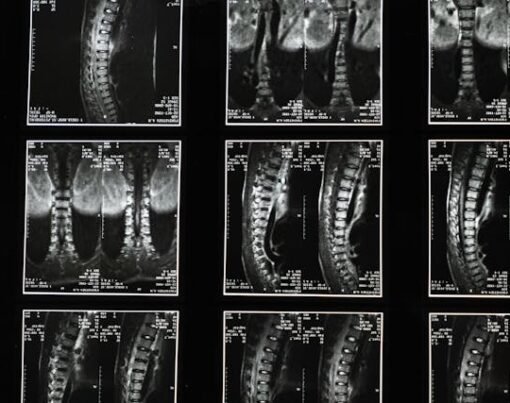Welcome to the world of dedicated injury care and comprehensive healing. An auto accident injury clinic is your sanctuary after the unexpected upheaval of an auto accident.
Here, you’ll encounter a professional team to diagnose and treat a variety of injuries sustained in auto accidents. You’ll find a tailored treatment process to put you back on the road to recovery.
Keep reading as we examine different treatments for your recovery. Let’s get into it!
Table of Contents
The Initial Consultation
When you walk in, you will meet with a team of highly skilled medical professionals who specialize in treating auto accident injuries. This meeting involves a discussion about the nature and extent of your injuries.
You’ll be asked about the events leading up to the accident and the symptoms you’re experiencing. There may also be a physical examination to assess your:
- mobility
- reflexes
- pain response
They may also perform diagnostic imaging such as X-rays or MRI scans to get a detailed view of your injuries. This evaluation provides the foundation for your personalized treatment plan.
Expert Medical Diagnosis
The expert clinicians employ a range of cutting-edge diagnostic tools to pinpoint the exact nature of your injuries. These may include advanced imaging techniques such as:
- CT scans
- MRIs
- ultrasound imaging
Moreover, they may use electromyography to evaluate any suspected nerve or muscle damage. This thorough diagnostic process allows the medical professionals to:
- visualize the injuries
- understand the severity
- formulate an effective treatment plan
With this, they can create a treatment plan that is best suited to your unique situation. This will ensure a quicker and more efficient recovery process.
Individualized Treatment Plan
This plan is designed on the specifics of your injuries and your personal recovery goals. Also, it may encompass a blend of:
Physical Therapy
Physical therapy is a hands-on approach aiming to rehabilitate your movement and function. This helps you regain strength and mobility impaired from the accident.
The physical therapist will assess your condition and develop a customized program specific to your needs. The therapy might include:
- exercises to improve flexibility and balance
- strength training
- massage or specialized techniques
The goal is not just to treat the symptoms but to address the underlying cause of your discomfort and limit future injury.
Occupational Therapy
The focus of occupational therapy is to enable you to carry out everyday tasks that could be compromised due to your injuries. The therapists work with you to enhance your ability to perform activities of daily living, such as:
- self-care
- work tasks
- leisure activities
They might teach new ways of approaching these tasks or recommend adaptive equipment to assist you. The therapy might also include cognitive exercises if you’ve experienced a brain injury.
This will address issues like memory, attention, or problem-solving. By aligning the treatment with your lifestyle and needs, occupational therapy ensures a smoother transition back to normalcy.
Chiropractic Care
This branch of therapy primarily focuses on diagnosing and treating issues related to the musculoskeletal system, particularly the spine. A chiropractor utilizes specific hands-on spinal manipulation techniques to:
- restore alignment
- improve mobility
- alleviate these pain symptoms
Treatment could also involve other non-invasive practices such as stretches, exercise recommendations, and lifestyle advice to enhance recovery. In short, this goes beyond immediate relief and aims to promote long-term health.
With each session, you will step closer to rejuvenation, regaining the freedom to live your life to the fullest without discomfort or restrictions.
Pain Management Techniques
These techniques may include the use of medication like analgesics or anti-inflammatory drugs to control pain and reduce inflammation. In addition, they may also use therapeutic interventions such as:
- heat or cold therapy
- transcutaneous electrical nerve stimulation
- acupuncture
For chronic or severe pain, interventional procedures like steroid injections or nerve blocks could be considered. They also emphasize the importance of psychological support in managing pain.
Rest assured, the chosen methods are always tailored to your unique circumstances and closely monitored for effectiveness. This will ensure an optimal balance between pain relief and overall wellness.
Surgical Interventions
In some cases, surgical interventions may become necessary, particularly when damages are severe or non-responsive to other forms of treatment. These highly skilled surgeons are equipped to perform a range of surgeries, including:
- orthopedic procedures
- neurosurgery
- reconstructive surgery
The decision to proceed with surgery is always made with the utmost consideration for your overall health and recovery goals. Preoperative and postoperative care is meticulously planned to minimize the risk of complications.
All in all, surgical interventions are viewed as a part of the treatment strategy with the aim of getting you back on track to normalcy after an auto accident.
The Importance of Post-Treatment Follow-Ups
Post-treatment follow-ups play a pivotal role in the recovery journey. These scheduled appointments allow your medical professionals to:
- monitor your healing progress
- adjust your treatment plan
- provide ongoing support
Any changes in symptoms, new concerns, or issues with your treatment can be addressed promptly. The process may continue to involve imaging or other diagnostic tools to visualize the progress of your healing.
This is also an opportunity for you to voice any concerns or ask questions about your recovery. Remember, healing from an auto accident is not a straight path but a journey with ups and downs.
The Rehabilitation Journey
Rehabilitation is more than just a destination. It’s a comprehensive program that is designed to meet your individual needs, focusing not just on physical recovery but also on psychological and emotional well-being.
Throughout the rehabilitative journey, patients are educated about their injuries and treatments. This empowers them to participate in their recovery process actively.
Overall, seeking immediate medical attention after a mishap is critical to ensure optimal healing. Pair this with the advice of the best auto accident lawyer in Phoenix, who can guide you through the process of filing your claims and securing your rights. Their tandem will ensure a seamless transition from medical recovery to legal resolution.
Things to Expect at an Auto Accident Injury Clinic
Thank you for being with us on this journey through an auto accident injury clinic. We hope this guide has helped you understand what to expect and how these clinics can help you get back on your feet.
Remember that these clinics will support you, and your recovery is their number one priority. So, take a deep breath, and know that with their help, you’re on the path to healing.
Did you find this article helpful? Check out the rest of our blog now for more!










